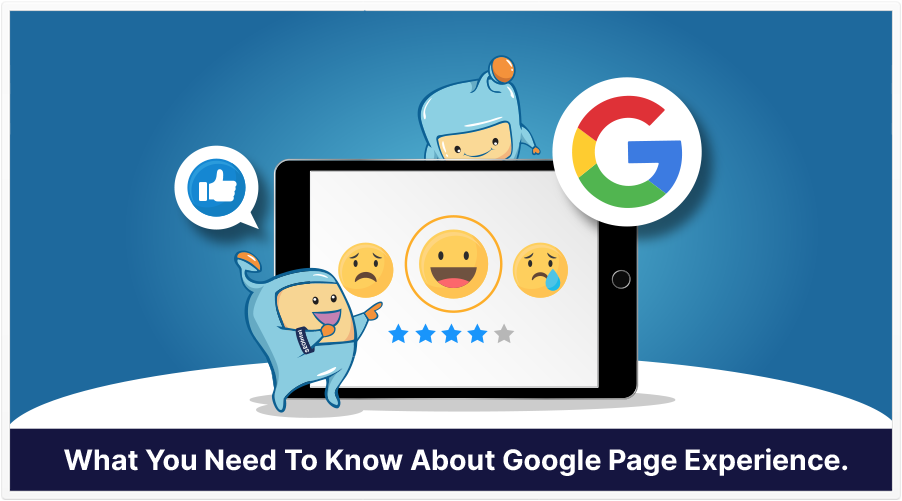
Earlier today, on the Google Search Central YouTube channel, Google released a video, titled First steps to getting a great Page Experience.
Now, if you know much about the Google Page Experience update (which is not to be confused with the Core Update, although Page Experience can also be called a core update), you know that Core Web Vitals is part of the Page Experience equation.
Well, although the Core Web Vitals are a critical part of Page Experience, they weren’t the focus of this video.
Nope. Instead, this video was about “everything else,” the factors that some may overlook.
There are 3 of these factors: Hypertext Transfer Protocol Secure (HTTPS), Mobile Friendliness, and Lack of Intrusive Interstitials.
But first, let’s look at what Page Experience is.
What Is Page Experience?
In a previous news item, I wrote a bit of a technical explanation of what Page Experience is. Here, I just want to give a brief definition that echoes what was said in the video: it’s simply making sure that the people who visit our web pages have a good experience.
And what makes up that good experience?
From a metrics perspective, part of what makes up a good page experience are the 3 factors I mentioned earlier: HTTPS, Mobile Friendliness, and Lack of Intrusive Interstitials.
Factor #1: HTTPS
HTTPS is used for secure communications. The data sent via an HTTPS connection is encrypted. Even if your site doesn’t ask for a person’s name, credit card info, and other sensitive data, it’s good to have HTTPS. That’s because it’s a connection that helps keep data secure, and helps reduce the likelihood of digital eavesdropping and so-called “man-in-the-middle” attacks (which I think are more likely to happen in public locations).
HTTPS pages help to provide a better page experience than non-HTTPS pages.
If your site (or some pages of your site) isn’t fully an HTTPS site (or a “secure” site, as some say), Let’s Encrypt is an industry-recognized authority that provides TLS certificates for free, so you can check it out at: https://letsencrypt.org/
Another tip mentioned in the video is to be sure that your canonicals go to the secure version of your pages, and that non-HTTPS traffic also goes to your secured version. (If you’re not sure about this, ask your webmaster to look into it.)
Factor #2: Mobile Friendliness
I think we all know that mobile traffic is significant.
So, we have to ask, Do our pages look as functional on a desktop as they do on a mobile? Of course, desktops and mobile phones usually have different screen ratios and orientations, so they don’t have to look the same, but they have to be functional.
How do you know if your web page is mobile-friendly?
Well, to be honest, if you’re using a modern site-building system, content management platform and/or modern theme, I’d be shocked if your web pages weren’t mobile-friendly, but if you want to be sure, check out the Mobile-Friendly Test page here: https://search.google.com/test/mobile-friendly
Also, if your site is in Google Search Console, you should receive notifications if a certain page isn’t mobile-friendly.
And, a word about mobile-friendliness: This wasn’t mentioned in the video, but with mobile-friendliness comes Mobile First, which, in SEO, is understood to mean that the mobile version of a page (how it looks on a mobile device), is the version that’s used primarily to determine how a site ranks.
Factor #3: Lack of Intrusive Interstitials
Don’t you hate those annoying pop-ups that just come out of nowhere and practically intrude on your viewing of the content you wanted to see (or read)?
It’s important that this factor is named the way it is, with emphasis on the words lack and intrusive. It’s a lack of these that you want.
As for intrusive, the video made a good distinction, which I take to mean that interstitials aren’t necessarily intrusive (at least, not with notorious intent like some ads are). You can have legal interstitials, cookie statements, privacy statements, user/login interstitials, and I suppose paid gateway interstitials that aren’t intrusive the way ads are.
Indeed, you’d probably expect to see some of these non-intrusive interstitials.
That said, the less intrusive, the better.
So, those were the 3 main factors discussed in the video. The video went on to mention more about Google Search Console and AMP: basically, you’re invited to monitor a lot of these via Search Console, and there are AMP tools you can use on AMP pages (if your site has those).